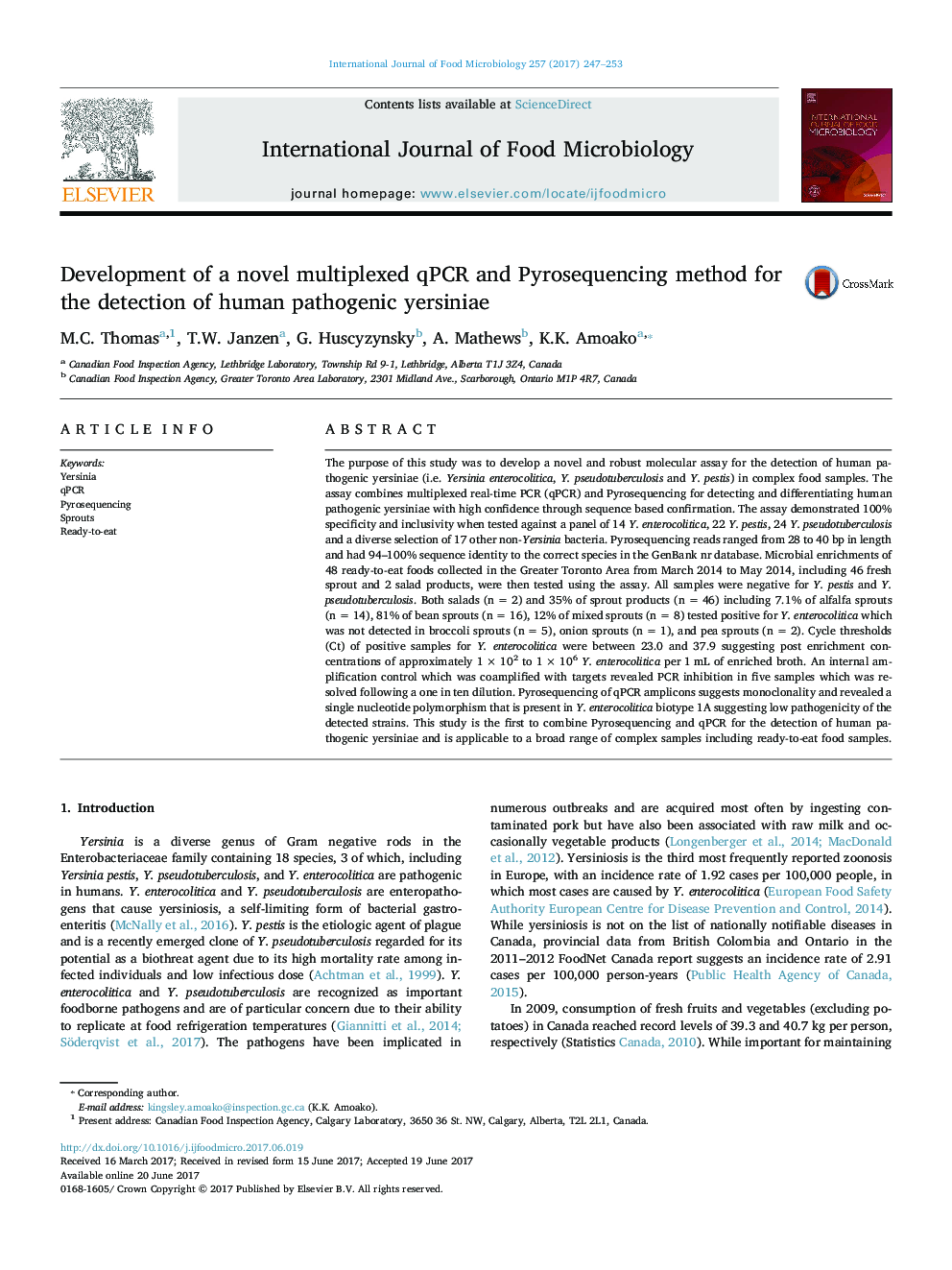| کد مقاله | کد نشریه | سال انتشار | مقاله انگلیسی | نسخه تمام متن |
|---|---|---|---|---|
| 5740674 | 1616526 | 2017 | 7 صفحه PDF | دانلود رایگان |

- A novel combined qPCR and Pyrosequencing assay was designed for pathogenic yersiniae.
- Overnight enrichments from 48 ready-to-eat retail food samples were screened.
- Y. enterocolitica was detected in 38% of enriched ready-to-eat samples.
- The Y. enterocolitica detected shared an outL gene SNP consistent with biotype 1A.
- Y. pseudotuberculosis and Y. pestis were not detected.
The purpose of this study was to develop a novel and robust molecular assay for the detection of human pathogenic yersiniae (i.e. Yersinia enterocolitica, Y. pseudotuberculosis and Y. pestis) in complex food samples. The assay combines multiplexed real-time PCR (qPCR) and Pyrosequencing for detecting and differentiating human pathogenic yersiniae with high confidence through sequence based confirmation. The assay demonstrated 100% specificity and inclusivity when tested against a panel of 14 Y. enterocolitica, 22 Y. pestis, 24 Y. pseudotuberculosis and a diverse selection of 17 other non-Yersinia bacteria. Pyrosequencing reads ranged from 28 to 40 bp in length and had 94-100% sequence identity to the correct species in the GenBank nr database. Microbial enrichments of 48 ready-to-eat foods collected in the Greater Toronto Area from March 2014 to May 2014, including 46 fresh sprout and 2 salad products, were then tested using the assay. All samples were negative for Y. pestis and Y. pseudotuberculosis. Both salads (n = 2) and 35% of sprout products (n = 46) including 7.1% of alfalfa sprouts (n = 14), 81% of bean sprouts (n = 16), 12% of mixed sprouts (n = 8) tested positive for Y. enterocolitica which was not detected in broccoli sprouts (n = 5), onion sprouts (n = 1), and pea sprouts (n = 2). Cycle thresholds (Ct) of positive samples for Y. enterocolitica were between 23.0 and 37.9 suggesting post enrichment concentrations of approximately 1 Ã 102 to 1 Ã 106Y. enterocolitica per 1 mL of enriched broth. An internal amplification control which was coamplified with targets revealed PCR inhibition in five samples which was resolved following a one in ten dilution. Pyrosequencing of qPCR amplicons suggests monoclonality and revealed a single nucleotide polymorphism that is present in Y. enterocolitica biotype 1A suggesting low pathogenicity of the detected strains. This study is the first to combine Pyrosequencing and qPCR for the detection of human pathogenic yersiniae and is applicable to a broad range of complex samples including ready-to-eat food samples.
Journal: International Journal of Food Microbiology - Volume 257, 18 September 2017, Pages 247-253